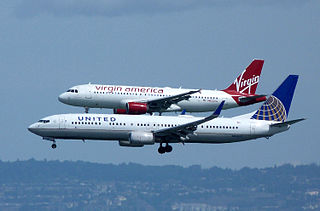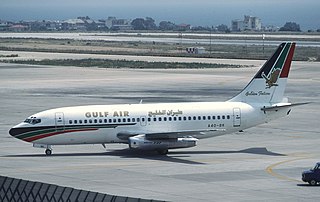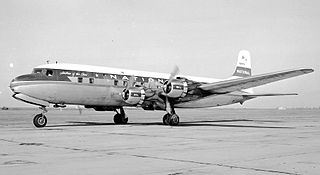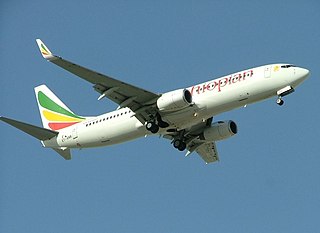Related Research Articles

Trans World Airlines Flight 800 (TWA800) was a Boeing 747-100 that exploded and crashed into the Atlantic Ocean near East Moriches, New York on July 17, 1996 at approximately 8:31 p.m. EDT, 12 minutes after takeoff from John F. Kennedy International Airport, on a scheduled international passenger flight to Rome with a stopover in Paris. All 230 people on board died in the crash; it is the third-deadliest aviation accident in U.S. history. Accident investigators from the National Transportation Safety Board (NTSB) traveled to the scene, arriving the following morning amid speculation that a terrorist attack was the cause of the crash.

An airliner is a type of aircraft for transporting passengers and air cargo. Such aircraft are most often operated by airlines. Although the definition of an airliner can vary from country to country, an airliner is typically defined as an airplane intended for carrying multiple passengers or cargo in commercial service. The largest of them are wide-body jets which are also called twin-aisle because they generally have two separate aisles running from the front to the back of the passenger cabin. These are usually used for long-haul flights between airline hubs and major cities. A smaller, more common class of airliners is the narrow-body or single-aisle. These are generally used for short to medium-distance flights with fewer passengers than their wide-body counterparts.

An aviation accident is defined by the Convention on International Civil Aviation Annex 13 as an occurrence associated with the operation of an aircraft, which takes place from the time any person boards the aircraft with the intention of flight until all such persons have disembarked, and in which (a) a person is fatally or seriously injured, (b) the aircraft sustains significant damage or structural failure, or (c) the aircraft goes missing or becomes completely inaccessible. Annex 13 defines an aviation incident as an occurrence, other than an accident, associated with the operation of an aircraft that affects or could affect the safety of operation.

JAT Yugoslav Airlines Flight 367 was a McDonnell Douglas DC-9-32 aircraft which exploded shortly after overflying NDB Hermsdorf, East Germany, while en route from Stockholm, Sweden, to Belgrade, SFR Yugoslavia, on 26 January 1972. The aircraft, piloted by Captain Ludvik Razdrih and First Officer Ratko Mihić, broke into three pieces and spun out of control, crashing near the village of Srbská Kamenice in Czechoslovakia. Of the 28 on board, 27 were killed upon ground impact and one Serbian crew member, Vesna Vulović (1950–2016), survived. She holds the Guinness world record for surviving the highest fall without a parachute at 10,160 m (33,330 ft).
UTA Flight 141 was a scheduled international passenger flight operated by Guinean regional airline Union des Transports Africains de Guinée, flying from Conakry to Dubai with stopovers in Benin, Libya and Lebanon. On 25 December 2003, the Boeing 727–223 operating the flight struck a building and crashed into the Bight of Benin while rolling for take off from Cotonou, killing 141 people. The crash of Flight 141 was the deadliest crash in Benin's aviation history.

Gulf Air Flight 771 was a flight from Karachi, Pakistan, to Abu Dhabi, United Arab Emirates. On 23 September 1983, while the Boeing 737-2P6 was on approach to Abu Dhabi International Airport, a bomb planted by Palestinian nationalist militant group, Abu Nidal Organization, exploded in the baggage compartment. The plane crashed in the desert near Jebel Ali between Abu Dhabi and Dubai in the UAE. All five crew members and 107 passengers died.

The Boeing Model 247 is an early American airliner, and one of the first such aircraft to incorporate advances such as all-metal semimonocoque construction, a fully cantilevered wing, and retractable landing gear. Other advanced features included control surface trim tabs, an autopilot and de-icing boots for the wings and tailplane. The 247 first flew on February 8, 1933, and entered service later that year.
This is a list of aviation-related events from 1972.
This is a list of aviation-related events from 1974.
This is a list of aviation-related events from 1976.
This is a list of aviation-related events from 1977.

Pan Am Flight 214 was a scheduled flight of Pan American World Airways from Isla Verde International Airport in San Juan, Puerto Rico, to Friendship Airport near Baltimore, and then to Philadelphia International Airport. On December 8, 1963, the Boeing 707-121 serving the flight crashed near Elkton, Maryland, while flying from Baltimore to Philadelphia, after being hit by lightning. All 81 occupants of the plane were killed. The crash was Pan Am's first fatal accident with the 707, which it had introduced to its fleet five years earlier.

National Airlines Flight 2511 was a United States domestic passenger flight from New York City to Miami, Florida. On January 6, 1960, the Douglas DC-6 serving the flight exploded in midair. The National Airlines aircraft was carrying 5 crew members and 29 passengers, all of whom perished. The Civil Aeronautics Board investigation concluded that the plane was brought down by a bomb made of dynamite. No criminal charges were ever filed, nor was the blame for the bombing ever determined, though a suicide bombing is suspected. The investigation remains open.

United Air Lines Flight 629, registration N37559 and dubbed Mainliner Denver, was a Douglas DC-6B aircraft that was blown up on November 1, 1955, by a dynamite bomb placed in the checked luggage. The explosion occurred over Longmont, Colorado, United States, at 7:03 p.m. local time, while the airplane was en route from Denver to Portland, Oregon, and Seattle, Washington. All 39 passengers and 5 crew members on board were killed in the explosion and crash.

Pan American World Airways Flight 202 was a Boeing 377 Stratocruiser aircraft that crashed in the Amazon Basin about 281 nautical miles southwest of Carolina, Brazil on April 29, 1952. The accident happened en route from Rio de Janeiro, Brazil, to Port of Spain, Trinidad and Tobago, during the third leg of a four-leg journey. All 50 people on board were killed in the deadliest-ever accident involving the Boeing 377.

Pakistan International Airlines Flight 705 (PK705) was a Boeing 720 airliner that crashed while descending to land at Cairo International Airport on 20 May 1965. Of the 127 passengers and crew on board, all but 6 were killed.

Pan Am Flight 7 was a westbound round-the-world flight operated by Pan American World Airways. On November 8, 1957, the Boeing 377 Stratocruiser 10-29 serving the flight, named Clipper Romance of the Skies, crashed in the Pacific Ocean en route to Honolulu International Airport from San Francisco. The crash killed all 36 passengers and eight crew members.

Ethiopian Airlines Flight 409 was an international commercial flight scheduled from Beirut to Addis Ababa that crashed into the Mediterranean Sea shortly after takeoff from Rafic Hariri International Airport on 25 January 2010, killing all 90 people on board. This was the first fatal crash for Ethiopian Airlines since the hijack of Ethiopian Airlines Flight 961 in 1996.

Metrojet Flight 9268 was an international chartered passenger flight, operated by Russian airline Kogalymavia. On 31 October 2015, at 06:13 local time EST, the Airbus A321-231 operating the flight exploded above the northern Sinai Peninsula following its departure from Sharm El Sheikh International Airport, Egypt en route to Pulkovo Airport, Saint Petersburg, Russia. All 224 passengers and crew on board died. The cause of the crash was most likely an onboard explosive device as concluded by Russian investigators.

On February 27, 1988, a Talia Airways passenger flight operated by a Boeing 727-200 with registration TC-AKD on behalf of JAT, crashed into the Kyrenian mountain range on approach to Northern Cyprus on 27 February 1988. All 15 occupants on board the aircraft died in the crash and fire that followed.
References
- ↑ "FAA Registry (NC13304)". Federal Aviation Administration.
- ↑ "Seven Killed in Crash of Giant Transport Plane" (PDF). The Citizen-Advertiser. Auburn, NY. AP. 11 October 1933. p. 12.
- 1 2 "1933 Crash of United Airlines Trip 23 Boeing 247 NC13304 Part 01 of 01". Federal Bureau of Investigation. Retrieved October 23, 2021.
- 1 2 3 4 "Aeronautics: Death on No. 23". TIME . 23 October 1933. Archived from the original on February 4, 2013.
- ↑ "Accident details". planecrashinfo.com.
- ↑ "Plane wreck laid to nitroglycerine". The New York Times . October 15, 1933. p. 31.
- 1 2 "Suspects Bomb Wrecked Plane" (PDF). Prescott Evening Courier. AP. 12 October 1933. p. 3.[ permanent dead link ]
- ↑ "Wreck of air liner laid to a bomb". The New York Times. 14 October 1933. p. 5.
- 1 2 van der Linden, F. Robert (November 1991). The Boeing 247: the first modern airliner (Google Books preview). Seattle, WA: University of Washington Press. p. 83. ISBN 0-295-97094-4.